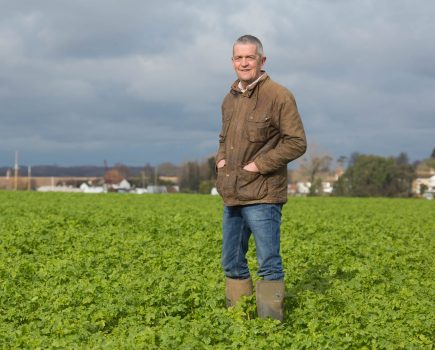 In the July issue of CPM we touched on stubble management a couple of times and it seems there’s still an awful lot to learn. Whether you’re an evangelical no-tiller, a dyed-in-the-wool plough enthusiast or somewhere in the middle, you have to ask whether a golden opportunity is being missed when it comes to doing the right thing with our stubbles.
In the July issue of CPM we touched on stubble management a couple of times and it seems there’s still an awful lot to learn. Whether you’re an evangelical no-tiller, a dyed-in-the-wool plough enthusiast or somewhere in the middle, you have to ask whether a golden opportunity is being missed when it comes to doing the right thing with our stubbles.
In those few weeks where the land is uncropped how do you decide the optimum approach, and does it differ from field to field? In reality blackgrass dictates most agronomic decisions on farms but do you time glyphosate applications according to the growth stage of the weed, as AHDB research indicates, or is it a job that fits around the many other things going on at that time of year and, of course, the weather.
It seems that stubbles may well be the most neglected subject in crop husbandry. The same attention to detail that goes into timing fungicides doesn’t necessarily get paid to glyphosate applications, even though it’s probably the best chance of killing that most challenging of weeds, blackgrass.
A similar situation applies when it comes to application. When spraying stubbles all the same principles apply as when spraying a crop but there’s a temptation to travel a little faster than the optimum speed. Most instances where glyphosate has been deemed not to work as well as expected are generally found to be due to its application.
But it came as a surprise to me that stubbles have also been neglected by research. There’s a sound base of knowledge as far as the best approaches to combat specific weeds, pest and diseases are concerned, but ask the question ‘when should this be done for best results?’ and an educated guess is the best our scientists can up with.
It seems strange to me because in a farming system no one problem can be tackled in isolation, so you’d think we’d have explored a more integrated way of looking at stubble management and certainly have updated our research into removal of the green bridge. BYDV is certainly likely to increase in significance with the loss of Deter (clothianidin) seed treatment and pyrethroid resistance in the aphid population. Surely it’s a field that now deserves some attention?
With farming on the threshold of a new era, with technologies nearing the market which will be capable of revolutionising agriculture, let’s not forget about the importance of applied research and looking at the basics – such as developing a framework to help growers make stubble management decisions that provide a best solution for a particular set of challenges.
On the subject of research, it’s incredibly frustrating not to be able to find out the detail of research projects which are awaiting peer review and publication. When some of the funding comes from the levy payer it seems downright wrong that researchers aren’t able to give any details before their paper has been published.
While I absolutely understand that the peer-reviewing system is a must to ensure research is credible, I fail to understand why industry can’t benefit from the knowledge gleaned by researchers ahead of publication in a scientific journal. Not many (if any) farmers subscribe to them after all.
My case in point is the research into glyphosate tolerance that we understand has been detected in blackgrass. The best we can find out is that this may be the smoking gun. So are we sleep-walking into an era of glyphosate resistance or are we a long way off?
The big frustration is we’re still waiting to find out the hard facts and figures about glyphosate tolerance. I’m sure the researchers find it as frustrating to have their hands tied by the rules of the scientific press as we do trying to find out the results and report the information to you in CPM.
But if knowledge exchange is going to improve, then this is one of the fundamental hurdles which needs to be addressed because it’s slowing down the availability of the research at grassroots level. It will be growers that will be affected if glyphosate tolerance is heralding the beginning of the end for the herbicide.
Based in Ludlow, Shrops, CPM technical editor Lucy de la Pasture has worked as an agronomist. @Lucy_delaP




